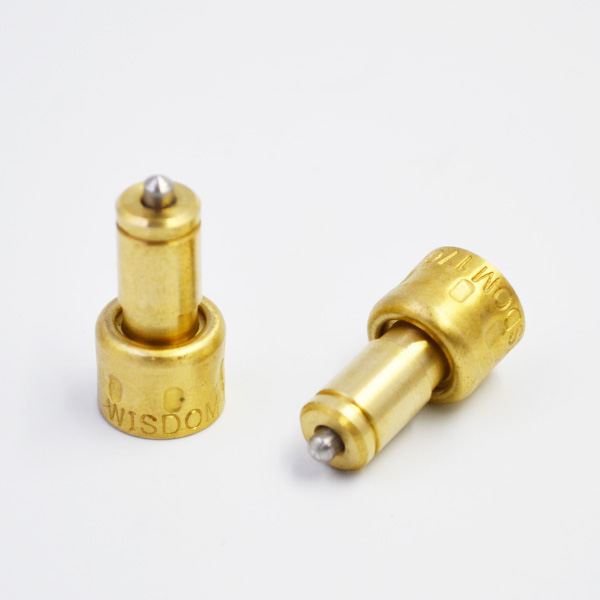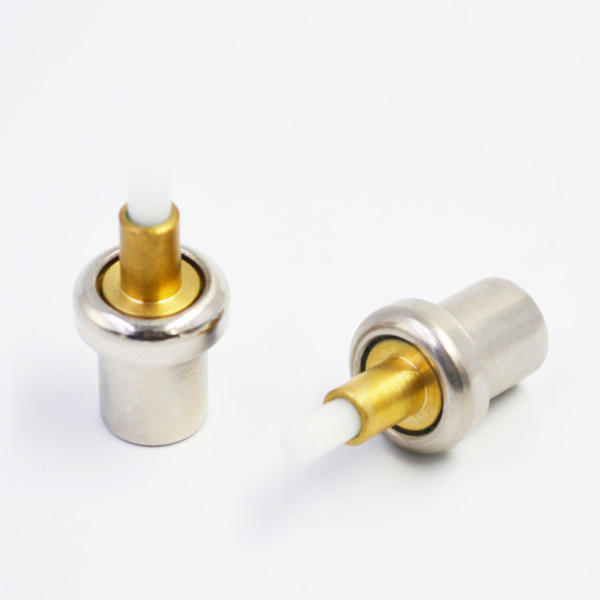With the continuous advancement of agricultural modernization, traditional agricultural seedling-raising technology is gradually developing towards automation and intellectualization.

A new type of mobile seedbed controller based on embedded and sensor technology was designed for the new type of mobile seedbed with electric film covering and heating functions. By sensing the temperature and humidity in the seedbed, the controller can automatically control the device of collecting, rolling and heating in time, so that the “small environment” in the seedbed is suitable for seedling growth. The precise and individualized control of the mobile seedbed by the controller can achieve the goal of emancipating labor force, improving production efficiency, saving energy and reducing consumption.
Facility agriculture is a remarkable symbol of modern agriculture. Promoting the development of facility agriculture is an important task to realize agricultural modernization. Mobile seedbed is widely used in multi-span greenhouse for high-benefit cash crop planting and seedling cultivation because of its high operational convenience and space utilization. In the seedling raising operation in low temperature season such as winter and early spring, greenhouse heating system is needed to heat the whole greenhouse environment, which has high energy consumption and high operation cost. At the same time, plastic film should be laid on the seedbed to increase the heat storage and moisture retention capacity of the seedbed, and the workload is large and the efficiency is low. In order to solve the above problems, Wang Rui et al. [4] designed a new type of arch-shed automatic film coiling and covering machine for the traditional mobile seedbed structure, which can realize the automatic coiling and covering function of plastic film on the seedbed. In this system structure, how to realize the precise, automatic and flexible control of seedbed “small environment” is an unsolved problem. Domestic and foreign research on this problem is still blank, and no similar control equipment can be directly used. For this reason, a mobile seedbed controller is designed in this study. By setting the target temperature, it can automatically control the temperature of the seedbed by taking up, winding and heating film, thus realizing the individualized and precise control of the “small environment” of the seedbed. Each seedbed is equipped with independent controllers which can provide individualized control for different agronomic requirements of seedlings and facilitate cluster management and flexible production of factory seedlings in the same greenhouse. A new type of movable seedbed with self-arched shed type automatic film coiling machine [4] and infrared electric heating film at the bottom of the seedbed, the structure of which is shown in Fig. 1. The winding pipe of the film coiling machine is installed in the middle of the top surface of the bracket, and a tubular motor is inserted into the cavity at the end of the winding pipe. The output shaft of the winding machine is fixed with the winding pipe, and the winding or covering of the plastic film is realized by the positive and negative rotation of the tubular motor. The working voltage of the tube-mounted motor is 220 V. It is controlled by three power supply signals, positive V1, common GND and reverse V2. The bottom of the seedbed is covered with an electric heating film for the whole heating of the small space of the seedbed. The far infrared electric heating film [5] is selected in this design.

The working voltage is 220 V, the current is 20 A, and the maximum heating temperature can reach 50 C. Environmental factors affecting seedling growth include nutrition, air, light, humidity and temperature, among which temperature and humidity are the key indicators. Therefore, temperature and humidity are selected as the input of the whole control system. The control equipment of the control system is electric heating film and coiled film tubular motor. Because the electric heating film is AC heating and the power is relatively large, it is not suitable for direct control. In this design, the photoelectric switch is used to indirectly control the relay on and off, so as to realize the control of the relay on and off. The tubular motor is controlled by 220 V AC. When V1 and GND are turned on, the motor is turned on to realize the operation of covering film. When V2 and GND are turned on, the motor is reversed to realize the operation of coiling film. Therefore, the principle of the controller is to indirectly control the action of film covering and heating equipment through the cooperation of three independent photoelectric switches and relays, so as to realize temperature and humidity control in the small environment of seedbed. The seedbed controller can automatically collect the data of temperature and humidity sensors installed in the seedbed, and then automatically control the heating of the electrothermal film, the folding or unfolding of the film coiling machine, or trigger the action by external keys according to the measured feedback value. At the same time, the seedbed equipment and the internal environment status information can be visually displayed through the display screen. The seedbed controller takes ARM 32-bit microprocessor as its core and adopts STM32F103 series 64-foot microprocessor chip. It has the advantages of low cost, low power consumption and strong performance. The microprocessor is mainly responsible for controlling the action of rolled film relay and electrothermal film relay, collecting temperature and humidity sensor signals, controlling RS485 cascade communication, LED display interface communication, processing external key interface and so on. The principle structure of the controller is shown in Fig. 2. The design of control driving unit for coiled tubular motor and electric heating film has a large working current, so it is necessary to design corresponding driving circuit to control its action. The control driving circuit can be divided into two parts: the low voltage control circuit and the high voltage working circuit. Low voltage control circuit includes microprocessor control IO port, optocoupler, MOS switch, electromagnetic relay coil, and protection circuit; high voltage working circuit includes AC power supply, electromagnetic relay common open contacts, controlled motor or heater. The relay drive circuit is shown in Figure 3. When the microprocessor IO port output high-level, trigger the light-emitting diode to turn on, after the photosensitive element is illuminated, the photosensitive triode to turn on, drive the NMOS switch on, trigger the relay coil circuit to turn on, relay electromagnetic coil to generate magnetic field, contact to make the relay open contact closed, high-voltage circuit circuit to turn on, tube motor or heater to turn on. Start work. Similarly, when the microprocessor IO port outputs low level, the tubular motor or heater stops working. The electrothermal film heater only needs to design a driving unit of the circuit relay. However, for the start-stop control of the tubular motor, the controller designs two circuit relay driving circuits. Through two IO ports, the controller controls the turn-on and turn-off of the tubular motor according to certain logic, thermostatic element and completes the control of the three states of the tubular motor: forward, reverse and stop. This design effectively avoids the misoperation of the tubular motor caused by the abnormal IO port state, thus avoiding the damage of the equipment. The state control logic of tubular motor is shown in Table 1. DS18B20 is used to collect temperature information in the small environment of seedbed. It is a digital temperature sensor. It has the characteristics of convenient wiring, wear resistance, impact resistance, small size and strong adaptability. It is suitable for temperature measurement and control in various narrow spaces.
Because of its direct output of digital signal, it can be directly connected with the IO port of microprocessor and read temperature data according to specific protocol. Humidity sensor HM1500LF is used to collect humidity information in small environment of seedbed. It is a capacitive linear voltage output humidity module with high reliability and long-term stability. When 5 V DC power supply is supplied, 0-100% relative humidity corresponds to output 1.0-3.6 V DC linear voltage, and the temperature dependence is very low. Since HM1500LF outputs analog signals, it is necessary to convert analog signals into digital signals through an analog-to-digital converter. This design uses 18-bit A/D conversion chip MCP3424, which has the characteristics of low noise, high precision, automatic correction of misalignment and gain error, adjustable resolution and two conversion modes. The humidity sensor data acquisition circuit is shown in Figure 4. The analog signal from humidity sensor is directly connected to MCP3424 sampling input port. The microprocessor establishes communication with MCP3424 through IIC bus, and carries out analog-to-digital conversion and data reading through standard protocol. Resistors R1 and R2 are pull-up resistors, which increase the driving ability of output pins and suppress reflection interference by impedance matching. Capacitor C1 is used for energy storage and bypass. Because of the unstable energy consumption of the circuit, if there is no capacitor when the power consumption suddenly increases, the power supply voltage will be pulled down, affecting the normal operation of the chip. At this time, the capacitor will release the temporary stored energy and stabilize the power supply voltage. In addition, the current in the circuit will pulsate frequently, which will produce some AC noise. Sound and capacitance can bypass this noise to the ground and improve the stability of chip power supply. The main program of the controller adopts the front-end and back-end running mode. After initialization of peripherals, it enters the main loop of the program. In the loop, it continuously inquires whether each interrupt flag bit is set to 1, and if set to 1, it executes the corresponding interrupt event processing subroutine. The interrupt program is triggered by external or internal events through interruption, and the corresponding flag position is 1. The external interrupt processing events of the controller include timing detection and control, external keys, communication commands, etc. The controller collects the temperature and humidity information every 30 seconds, compares the actual measured value with the set target value, and then controls the action of heating film and coiling film according to a certain algorithm, so as to make the small environment index of seedbed meet the requirements. External keys mainly deal with manual setting of temperature and humidity values, and then stored in non-volatile memory.
The controller has RS-485 external communication interface, which makes it easy for the device to connect to the bus system. When the external data package is received, the controller parses the protocol and then performs the related operations according to the command. The main program flow of the controller is shown in Fig. 5. In view of the large-scale seedbed group centralized management and control often needed by seedling enterprises, RS-485 communication interface is reserved for the seedbed controller, and a bus communication system composed of multiple seedbed controllers can be connected to the central control room for centralized management and monitoring. The centralized management and control of seedbed group is shown in Fig. 6. Aiming at a new type of mobile seedbed with electric mulching and heating function, this research designs and develops a mobile seedbed controller. Through the cooperation of hardware circuit and embedded software, the controller can realize the operation of single seedbed, such as harvesting, rolling and heating, so as to achieve temperature and humidity control and create a suitable seedling growth. Small Environment. The experimental results show that the error of temperature control and humidity measurement of the seedbed by the controller is less than 0.5 C and less than 1%. The controller designed in this study realizes the precision and individualized control of seedbed, and improves the level of automatic control and management of seedbed, saves manpower cost, saves energy and reduces consumption. The follow-up research will focus on the control strategy, algorithm and expert system construction of the whole process of automatic seedling breeding, so as to realize the real emancipation of labor force and meet the market demand for diversified and personalized seedling products.
